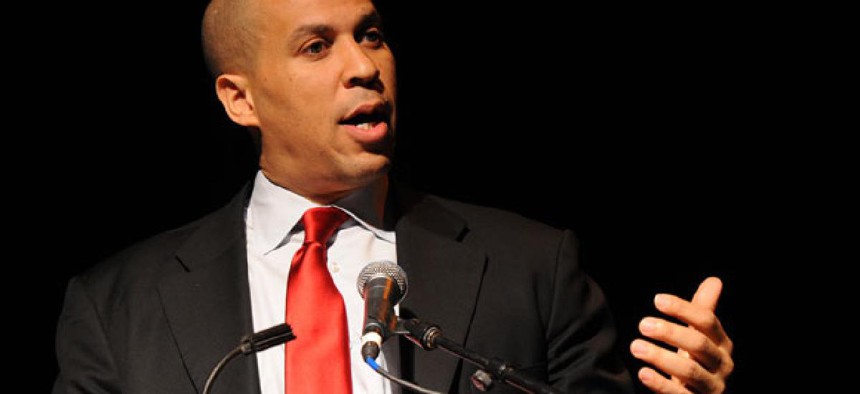How to Use Social Media in Government: A Response to Cory Booker

Newark Mayor Cory Booker spoke at South by Southwest last week, Eugene Parciasepe/Shutterstock.com file photo
The answer isn’t cut and dried.
Newark Mayor and Senate candidate Cory Booker may be the hottest thing in government social media now but the General Services Administration’s social media guru Justin Herman is no slouch either.
So when Booker told an audience at the South by Southwest festival in Austin, Texas, on Monday that the government was failing at social media there was bound to be a response.
Herman’s blog post over at GSA’s Digital Gov website is mostly a laundry list of the way various federal agencies are using social media to engage more substantively and efficiently with their main constituencies. The Education Department, for example, holds monthly #AskFAFSA Twitter chats where experts answer in-depth student loan questions that are tailored to an individual questioner but might also help other students who are following the chat.
Herman’s blog post hints, though, at the complexity of practicing social media inside organizations as large and bureaucratic as most federal agencies.
Mayors and other executives can make social media seem like a panacea for addressing constituent concerns when what’s really addressing those concerns is the power that executive brings to the social media conversation. If you tweet at the mayor about a pothole in front of your house and he tells someone to fix it, for example, you can bet it will rise to the top of the streets department’s to do list.
But that won’t fix the pothole problem across the city.
Tweeting at the Veterans Affairs Department about your unanswered disability claim is a similar story. VA has a claims backlog and simply changing the medium you complain about that in isn’t going to reduce it. The question is whether social media can help at the margins in making the way the agency handles that backlog more efficient.
One of Herman’s major initiatives at GSA is increasing the use of analytics to measure how social media is enabling government to either provide better services or to lower the cost of providing the same services. The Education Department, for example, might measure whether answering student loan questions on Twitter reduces the volume of similar questions it answers by phone and email thus freeing up staff time.
Herman’s blog post closes with an acknowledgement that some of Booker’s criticisms are warranted .
“Of course, there are those who are still only sharing [on social media] and not yet listening or engaging,” Herman says. “Just like you we frown upon it.”
That line is followed by what may be the first “Arrested Development” gif in a federal blog post, one of Micheal Bluth shaking his head and saying “NO NO NO.”
“We want to get to YES,” the post continues. “But that means being able to measure return on investment… Share with us your ideas here or on the #socialgov hashtag, and we’ll be there to meet you.”
(Image via Eugene Parciasepe / Shutterstock.com)






